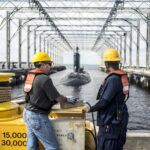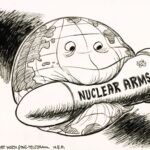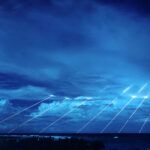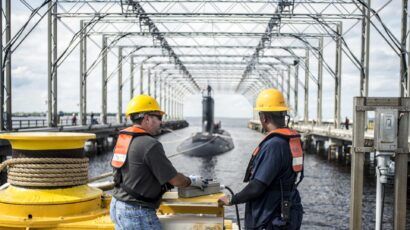Why nuclear-powered commercial ships are a bad idea
By George M. Moore | September 5, 2024
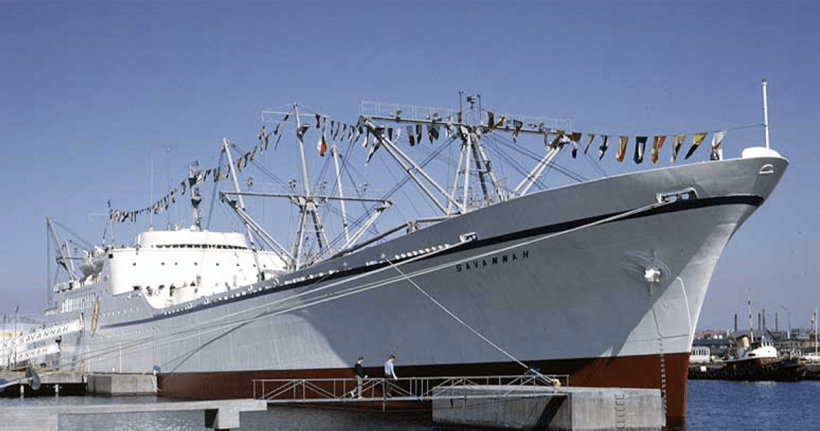 The N.S. Savannah was the world's first nuclear powered merchant ship. It launched in 1959 as part of the Atoms for Peace program. Photo: Department of Transportation Maritime Administration
The N.S. Savannah was the world's first nuclear powered merchant ship. It launched in 1959 as part of the Atoms for Peace program. Photo: Department of Transportation Maritime Administration
Late last year, Jiangnan Shipyard, a part of the Chinese government-owned China State Shipbuilding Corporation (CSSC), announced that it would create one of the largest cargo container ships ever built, and power the vessel with a thorium reactor.[1] The announcement came amid a flurry of publicity about nuclear-powered commercial shipping that harkens back to the era when nuclear energy was going to provide electrical energy that would be too cheap to meter.
The recent burst of enthusiasm for nuclear-powered ships is largely driven by concerns about climate change and belief in new, supposedly safer nuclear reactor designs that would dramatically cut greenhouse gas emissions from international shipping.
But that enthusiasm ignores nuclear safety and security concerns that make the development of nuclear-powered commercial ships a particularly bad idea in an era of international terrorism and piracy. And that’s not even to mention the cost of insuring them.
A history of failure. Like clothing fashions, ideas for the applications of nuclear energy phase in and out of vogue. After President Eisenhower’s Atoms for Peace speech in 1953, nuclear propulsion of commercial ships made initial steps forward. In 1959, the United States launched the nuclear-powered NS Savannah, a passenger/cargo vessel that became known as the “Peace Ship.”[2]
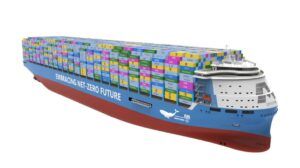
Germany followed with the nuclear ship Otto Hahn,[3] launched in 1964, which was primarily a research vessel and bulk cargo (e.g. ore) carrier. In 1969 Japan launched the nuclear-powered research/cargo vessel Mutsu.[4]Finally, in 1986 the Soviet Union launched, and the Russian Federation continues to operate, the nuclear-powered cargo ship Sevmorput,[5] a container vessel specially reinforced for Artic operations. Also, the Russian Federation operates several nuclear-powered icebreakers, the first of which pre-dated NS Savannah and was the first nuclear-powered civilian ship of any type. Except for the Sevmorput, the four commercial vessels have been powered by reactors fueled with low-enriched uranium.[6]
One of the key failures of these first-generation nuclear-powered commercial ships was that they were not economic to operate. For example, Savannah had only a small cargo-carrying capacity and carried just a few passengers. In addition, the ships were built in an era when containerized shipping had not reached its present domination of the cargo industry. They were designed as relatively small capacity cargo carriers or commodity bulk carriers and could not produce enough revenue to justify the cost of operating the nuclear power plants. The Otto Hahn and Mutsu had their reactors replaced with conventional power plants and went on to have successful post-nuclear careers. NS Savannah operated until 1971 and then underwent a protracted decommissioning period. Savannah is slated to become a museum piece when the final stages of its ongoing decontamination are completed. Note that over the years the idea of using nuclear power for commercial ships has reappeared periodically but has not been pursued.[7]
Another key failure of these first-generation ships was the considerable adverse public reaction to them. The ports that would allow them access did so on a special permit basis, often as a one-time allowed visit. Particularly in Japan, there were public demonstrations against the vessels that cited environmental and safety concerns.
Revisiting the commercial nuclear-powered ship concept. Renewed interest in nuclear-powered commercial vessels has been driven by at least two factors: The first is a desire to decrease fossil fuel emissions to protect the environment. The second centers on the belief that new small modular reactors (SMRs) can provide safer and more economic alternatives to the small pressurized water reactors that powered previous generations of commercial nuclear ships.[8]
China recently announced plans for a massive nuclear-powered container ship.[9] In addition, Rafael Grossi, Director General of the International Atomic Energy Agency, has encouraged a study of nuclear power applied to commercial shipping to aid the environment.[10]
But the post-9/11, post-Three Mile Island/Chernobyl/Fukushima world is vastly different from the 20th century political and social environment in which the first generation of nuclear ships were developed. Even if economic issues can be overcome with newer, cheaper technologies and increased carrying capacity of either cargo (as China apparently thinks their mega-container ship will do) or passengers (as some commentators have suggested), making nuclear-powered ships economical, the security and safety concerns, real and imagined, would far outweigh the benefits of nuclear power. There are real nuclear security risks and safety concerns associated with nuclear-powered commercial ships. And even if those concerns seem reasonable to those with sufficient technical background to evaluate these risks, the public perception of these risks would likely pose an all-but insurmountable barrier.
One does not have to imagine the Somali pirates capturing a nuclear-powered ship to be aware that the ships could be a significant terrorist target, both in port and at sea. In contrast to military nuclear-powered ships, which maintain arguably significant security protections, commercial ships and shipping facilities are afforded relatively little security protection. Even if the public accepted the use of nuclear-powered ships in their ports, in all probability expensive security measures would be needed for operations to be considered reasonably safe from terrorist attacks. Overcoming these concerns would pose significant financial burdens on the vessel operator and port facility and would limit the number of ports where nuclear-powered ships could dock.
Second, the potential for a reactor accident, albeit low, must be considered. Proponents argue that use of new fuels such as TRi-structural ISOtropic (or TRISO) pellets, which the Energy Department claims to be the most robust nuclear fuel ever created, and concepts such as low-pressure molten salt reactors make the spread of contamination from an accident far less likely than was the case with the high-pressure, water-cooled reactors that are used in use in military naval ships. Such arguments tend to ignore one fact: Commercial ships are surrounded by water. If there is leakage, waterborne contamination that could be extremely difficult to contain, potentially threatening expanded areas and raising concerns about, for example, commercial fishing.
Nuclear propulsion of commercial shipping also creates unique risks. In contrast to military vessels designed to resist damage, commercial ships are relatively thin-skinned and not nearly as damage-tolerant as military hulls. In addition to the risk of terrorist or wartime attacks, nuclear-powered commercial vessels face the risks of collision, grounding, and weather-related damage.
The protections needed if nuclear-powered commercial ships are built. At least for the foreseeable future, nuclear-powered commercial ships are a bad idea. However, it appears that China, perhaps followed by other countries, may build at least a few of these ships in the near future. Assuming that is the case, it is essential that the countries’ regulatory bodies for nuclear power plants be involved in the review of any commercial ships that are nuclear powered. The agencies will need to expand their risk analysis methodology to include unique seagoing risks, and they should be empowered to block construction if the risks are found to exceed acceptable levels.
Should such ships be built and operated outside the territory of the state in which they were built, it is essential that information be shared with other states to ensure that they can effectively evaluate risks and prepare adequate emergency response plans.
On a final note, the international insurance system will need to grapple with how to evaluate the risks associated with nuclear-powered commercial shipping, and insurance and treaty agreements will need to be structured to ensure that the public is adequately compensated in case of an accident. The potential costs are not negligible.
Notes
[1] A thorium reactor is one in which thorium is mixed with uranium startup fuel. In operation the thorium converts to uranium 233 which provides continuing fuel.
[2] See, N.S. Savannah Association website available at: https://www.ns-savannah.com/. See also an excellent short documentary films, “Why The World Was Afraid Of This Ship: N.S, Savannah available at: https://www.youtube.com/watch?v=cYj4F_cyiJI and “The Nuclear Ship Savannah” available at: https://www.youtube.com/watch?v=SA8W2Xpz2hA.
[3] Radiationworks, NS Otto Hahn -Germany’s Nuclear Powered Cargo Ship. Available at: https://radiationworks.com/ships/nsottohahn.htm
[4] S. Sasaki, “General Description of the First Nuclear Ship ‘Mutsu,’” Nuclear Engineering and Design, Vol 10, pp. 123-135 (1969). Available at: chrome-extension://efaidnbmnnnibpcajpcglclefindmkaj/https://www.sciencedirect.com/sdfe/pdf/download/eid/1-s2.0-0029549369900351/first-page-pdf.
[5] World Nuclear Association, Nuclear Powered Ships, February 2023J. Available at: https://world-nuclear.org/information-library/non-power-nuclear-applications/transport/nuclear-powered-ships. Shaw, Ships Monthly, “Nuclear-Powered Sevmorput To Be Retired,” January 2024. Available at: https://shipsmonthly.com/news/nuclear-powered-sevmorput-to-be-retired. For an article critical of recent operations of Sevmorput, see: KIMO International/NFLA media release, “Stranded in Vladivostok: the mysterious (and concerning) plight of Russian nuclear-powered freighter,” January 24, 2022. Available at: https://www.kimointernational.org/news/stranded-in-vladivostok-russian-nuclear-powered-freighter.
[6] Low-enriched uranium is defined as having an enrichment of less than 20 percent of the fissile isotope uranium 235.
[7] See, for example, E.V. Maynard, “The Case for Nuclear-Powered Merchant Ships,” Proceedings of the U.S. Naval Institute, January 1981, available at: https://www.usni.org/magazines/proceedings/1981/january/case-nuclear-powered-merchant-ships.
[8] P. Patel, IEEE Spectrum for the Technology Insider, “The Case for Nuclear Cargo Ships,” January 20, 2024. Available at: https://spectrum.ieee.org/nuclear-powered-cargo-ship
[9] D. Dalton, “China Unveils Plans For ‘Largest Ever’ Container Ship, Powered By Thorium Reactor, NUCNET January 5, 2024. Available at: https://www.nucnet.org/news/china-unveils-plans-for-largest-ever-container-ship-powered-by-thorium-reactor-1-5-2024.
[10] D. Dalton, “Grossi Calls For Roadmap As Nuclear Seeks To Become ‘Viable Option’ For Shipping, NUCNET May 17, 2024. Available at: https://www.nucnet.org/news/grossi-calls-for-roadmap-as-nuclear-seeks-to-become-viable-option-for-shipping-5-5-2024.
Together, we make the world safer.
The Bulletin elevates expert voices above the noise. But as an independent nonprofit organization, our operations depend on the support of readers like you. Help us continue to deliver quality journalism that holds leaders accountable. Your support of our work at any level is important. In return, we promise our coverage will be understandable, influential, vigilant, solution-oriented, and fair-minded. Together we can make a difference.
Keywords: Jiangnan Shipyard, NS Savannah, Sevmorput, nuclear-powered commercial ships
Topics: Analysis, Nuclear Energy, Nuclear Risk

